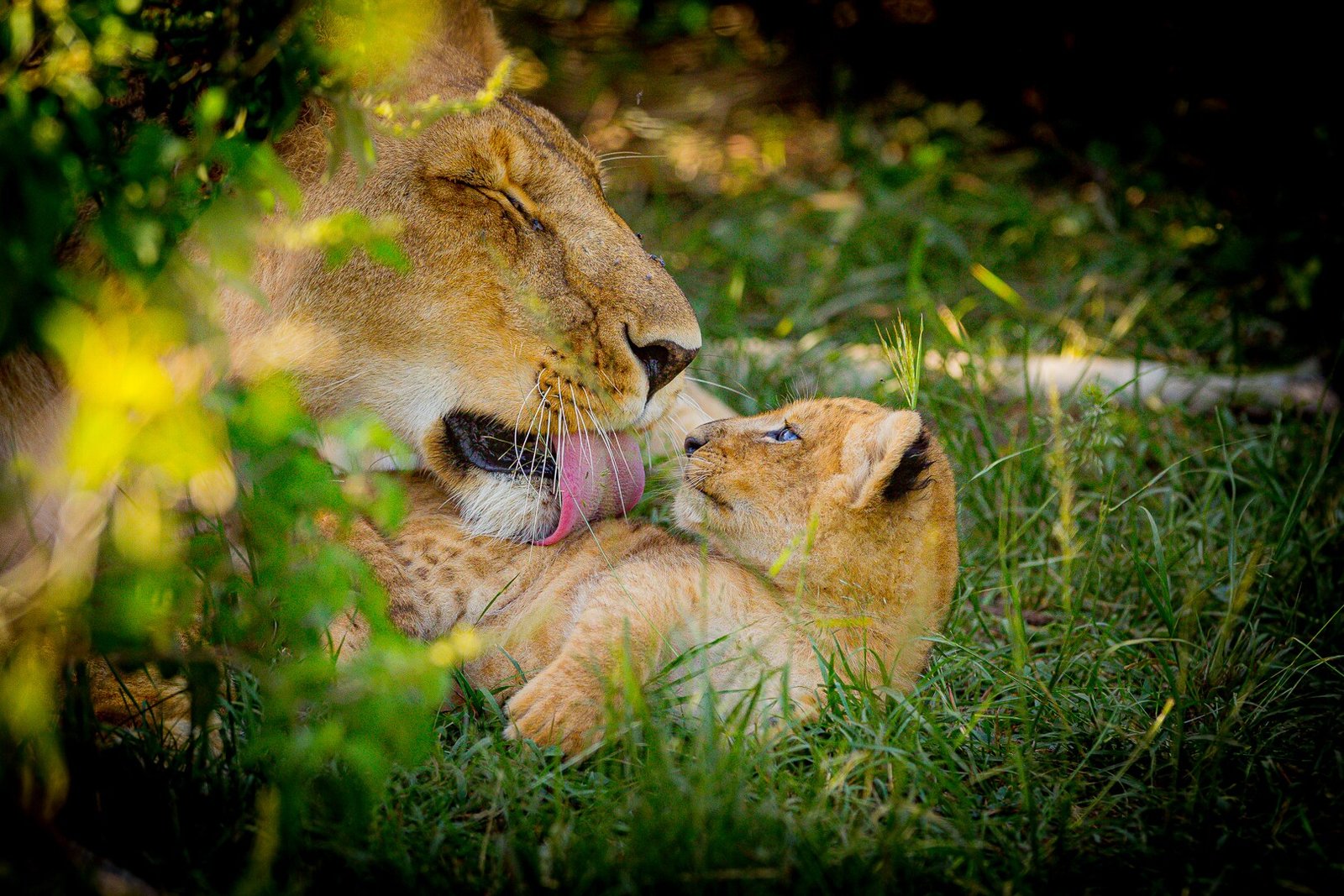





The Samburu Game Reserve is a striking wildlife haven nestled in northern Kenya’s rugged landscapes. Set along the Ewaso Nyiro River, this 165-square-kilometer reserve offers rare wildlife sightings and dramatic scenery. It’s one of the few places where you can spot the unique “Samburu Special Five” — Grevy’s zebra, reticulated giraffe, Somali ostrich, gerenuk, and Beisa oryx.
Samburu is also home to approximately 900 elephants, as well as big cats such as lions, leopards, and cheetahs, and a vibrant birdlife comprising over 450 recorded species. Leopard sightings here are especially rewarding, and wild dogs are often spotted as well.
Less crowded than other parks, Samburu delivers an intimate safari experience, with excellent game viewing and rich cultural interactions.

Bordering conservancies like Kalama and West Gate add more depth to this already unforgettable safari destination in Kenya’s wild north.

Samburu Game Reserve, Kenya
0.6243° N, 37.5361° E

Wildlife viewing is best during the dry seasons—June to September and January to February—when animals congregate near water sources.
Avoid April and November, when rains are heaviest and wildlife disperses, making sightings more challenging in the thick, green vegetation.
Samburu can be accessed by road or air. Driving from Nairobi takes 6 to 7 hours, offering scenic views.
Alternatively, fly from Wilson Airport to Samburu’s nearby airstrips for a quicker, more comfortable start to your northern Kenya safari.
Samburu has a hot, dry climate with daytime temperatures reaching 32°C. Nights cool down, often requiring warm layers.
The rainy seasons peak in April and November, but overall rainfall is low. Early mornings can be chilly during game drives.
Enjoy guided game drives, birdwatching, and sightings of rare northern species across Samburu’s dramatic landscapes.
Cultural visits to Samburu villages add depth to your safari. Nearby conservancies offer extended wildlife viewing and more immersive safari experiences beyond the reserve.


Understand the factors that influence safari prices, including park fees, accommodation, and travel seasons in Kenya.
Learn More
Discover the entry requirements, visa types, and straightforward application process for your Kenya tourist visa.
Learn More
Discover Kenya’s diverse local cuisine, featuring dishes such as nyama choma, ugali, samosas, and fresh tropical fruits.
Learn More
Get a practical list of what to pack for comfort, safety, and style on Kenyan safaris.
Learn More
From wildlife safaris to coastal escapes, discover Kenya’s top activities and experiences for every traveller.
Learn MoreThe best time to visit Kenya is during the dry season, which runs from June to September. During these months, the grass is low, water sources are limited, and animals gather in open areas—making them easier to spot on game drives.
Temperatures are mild, skies are clear, and there’s excellent visibility for wildlife photography. It’s also the prime season to witness the Great Wildebeest Migration in the Masai Mara, especially from July to early October, when herds cross from Tanzania’s Serengeti into Kenya.
A well-thought-out Kenya safari packing list ensures comfort, protection, and convenience. Pack neutral-colored clothing, such as khaki or beige, to blend in with the environment and minimize the risk of attracting insects. Include long-sleeved shirts, lightweight trousers, a wide-brimmed hat, and a fleece for chilly mornings.
Don’t forget sunscreen, insect repellent, sunglasses, and binoculars. Most safari flights have baggage restrictions, so soft-sided bags are preferred. If you're visiting during the rainy season (March to May or October to November), include a light raincoat or poncho.
The cost of a Kenya safari depends on several factors, including the season, accommodation type, park entrance fees, and level of luxury. On average, travelers spend between $250 and $ 1,000 per person per day on a private safari package.
Budget safaris with basic lodges are less expensive, while high-end lodges and fly-in safaris tend to increase the price. Costs typically include transport, park fees, meals, game drives, and guide services. Extras, such as balloon rides or cultural visits, may be charged separately.
There are numerous activities to enjoy in Kenya beyond traditional game drives. Wildlife safaris in the Masai Mara, Amboseli, and Lake Nakuru are a must, offering the chance to see the Big Five and other unique animals.
Other activities include hot air balloon rides, guided nature walks, birdwatching, and visits to the David Sheldrick Elephant Orphanage or Giraffe Centre in Nairobi. For a change of scenery, relax on Kenya’s beautiful beaches in Mombasa or Diani.
Kenya is home to several world-renowned national parks and reserves. The most popular Kenya safari parks include the Masai Mara Game Reserve, famous for the Great Migration, and Amboseli National Park, known for its elephant herds and views of Mount Kilimanjaro.
Other top destinations include Tsavo East and West, Lake Nakuru National Park, renowned for its flamingos and rhinos, and the Samburu National Reserve, which is home to rare species. Each park offers a unique ecosystem and wildlife experience, making Kenya a diverse safari destination.
To truly enjoy a safari, plan for at least 3 to 4 nights at each lodge or park. A full day allows for two game drives—one in the morning and another in the late afternoon—when animals are most active.
A comprehensive Kenya safari itinerary typically spans 7 to 10 days, encompassing two or three national parks. This gives you time to enjoy different landscapes, wildlife, and lodge experiences without feeling rushed. It also increases your chances of seeing all the animals on your wishlist.
Yes, Kenya is safe for safari travel, especially when you go with a reputable tour operator. Most lodges and camps are situated in remote areas, far from urban concerns, and they maintain strict safety protocols for their guests.
You’ll be accompanied by professional guides and supported by local staff throughout your trip. For health safety, it’s recommended to take malaria prophylaxis and get a yellow fever vaccination. Staying informed and traveling with a trusted provider ensures a worry-free experience.
“It starts with your ideas. We turn them into an authentic safari filled with wonder, freedom, and wild beauty.”
